While GPS guidance technology has been on the go for a long number of years in agriculture, it is really in the last 10 years that it has filtered down on to Irish tillage farms and even more recently on to livestock farms.
Factors driving the use of such systems not only include more complex machines, capable of wider working widths, but also high input prices such as fertiliser and sprays and their more regulated usage. Therefore, precise application and placement is key in a modern farming enterprise. In addition, there is an element of labour saving too.
Where labour and experienced operators are limited, guidance undoubtedly makes task of fertiliser spreading etc easier. Modern, free-to-air guidance systems in their simplest form are much more refined and versatile in their ability now too.
In many cases, the implantation of even the most basic guidance system can lead to savings at farm level. Take, for example, urea currently priced at €500/t, back from the record 2022 highs of €980/t. If a farmer spreads 50t annually and can save 1% (500kg) for conservative calculations, he or she can save €250 in monetary terms. Not only is this a financial saving but it is a nitrates saving too if it results in less product being spread.
Establish your needs and budget
Before making any decisions on brand or model, Gavin outlined the importance of assessing the exact needs and requirements from a guidance system along with a budget, as this will automatically narrow the options.
It is also important to compare like for like in terms of spec.
Do you require a system purely to point you in a straight line and show a basic coverage map for broadcast fertiliser applications in grassland? Or do you require further levels of accuracy and a system that offers the potential of going down the route of section control and/or the capability of being used as an Isobus-control terminal in the future? These are two very different scenarios with different solutions.
There is a vast number of companies offering tablet-based systems to do the former, while the premium brands tend to offer solutions that do the former and are ready for the latter through the use of unlocks.
Essentially, these brands take a modular approach whereby such functionality is integrated into the solution but in order to be somewhat price competitive they lock their use.
Then when the use of such functions are required they are made available with unlocks through the dealer.
This doesn’t mean that the premium brands of Topcon and Trimble and others offer only one physical solution. They do in fact offer an extensive range with the same basic functionality.
Certain smaller tablet-based systems do not have access to the same range of satellites as some of the more premium brands
However, the main differences aside from certain unlocks as standard is screen size, processing power and memory.
Oftentimes, certain smaller tablet-based systems do not have access to the same range of satellites as some of the more premium brands and therefore signal/ accuracy can be an issue in parts of the country.
Larger global brands like Trimble and Topcon tend to be aligned with more satellites.
Gavin outlined that Topcon free to air systems can access as many as 36 satellites at any one time.
Although free-to-air signals can provide accuracy down to as little as 0cm to 12cm which will satisfy almost all non autosteer users, customers can upgrade to a subscription-based correction service at a later stage, if accuracy down to as much as 1cm is required.
The basic tablet-based systems can be bought from €1,000 plus VAT depending on features and functions.
However, the more premium options tend to start around €2,500 plus VAT. For this, you are essentially paying for the increased capability, increased functionality and upgradability.
Once purchased, consider having your system insured.
Wel-Tech Agri and Plant
We met Gavin Weldon from Wel-Tech Agri and Plant, specialists for Topcon Positioning Systems, to see what’s involved in installing a Topcon XD basic manual guidance system to a non-guidance ready tractor.
Based in Ardee, Co Louth, Wel-Tech also specialises in the supply and service of RDS weighing systems and Landquip sprayers.
Topcon is a well-established name in the guidance market and offers what can be described as some of the more premium solutions currently on the market.
Catering for the customer with more basic needs, Topcon since 2020 has offered its 7in XD terminal and its AGM-1 receiver.
Moving up through the range it offers the XD Plus (12.1in), X25(8.3in) and X35 (12.1in) systems.
Everything you need to get started is in the box. The XD kit includes the 7in touchscreen display terminal, AGM-1 rooftop receiver, mounting bracket and a wiring loom with all the necessary connectors plus a power switch.
The AGM-1 is the entry level receiver and is capable of 30cm pass to pass accuracy using Topcon’s Topnet Live correction service. 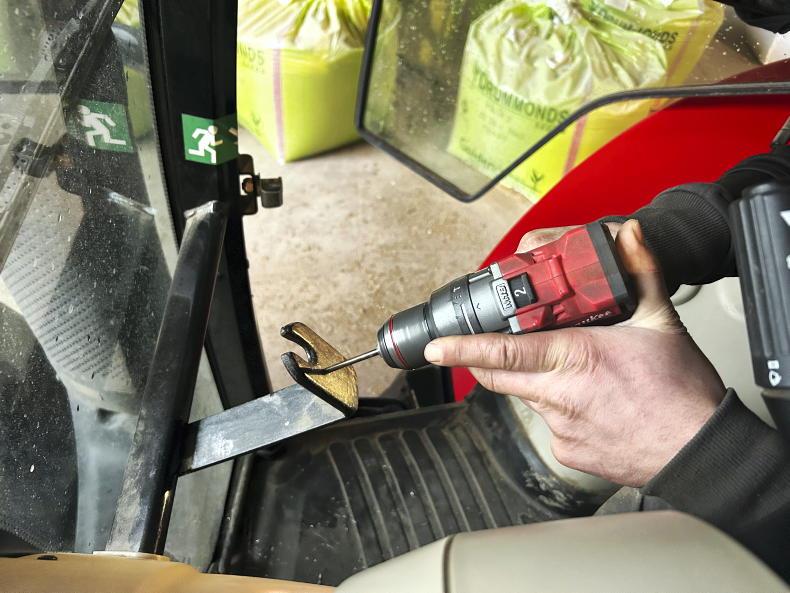
The bracket mounting process.
The tractor in which the XD unit was installed was a Massey Ferguson 7718S.
The customer required the display to be positioned alongside the steering column so that it would be within his line of sight when looking forward.
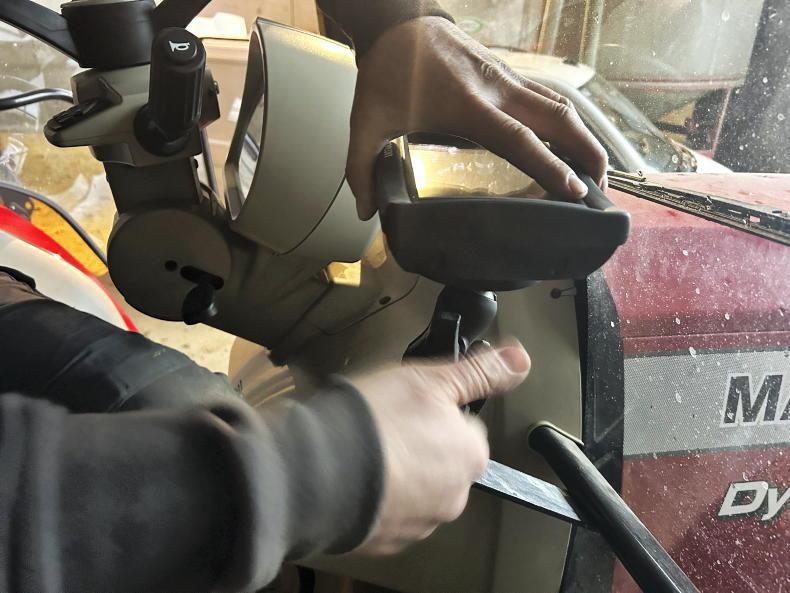
The XD terminal is mounted to the bracket.
A simple mounting bracket was fabricated out of flat, mild steel and mounted to the lower cross member at the front of the cab.
The base of the terminal’s adjustable mount was bolted to the steel bracket.
The terminal was then mounted and its position set and secured. 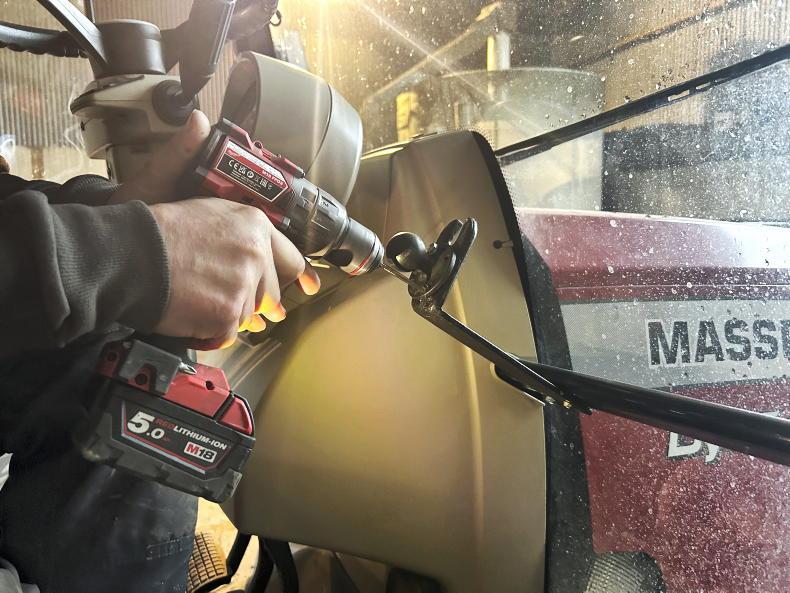
The ram mount is fixed to the steel bracket.
Wiring up the XD system is practically a matter of plug and play. However, Gavin outlined that being a CAN bus wiring loom, cutting and re-terminating plus isn’t an option.
According to Gavin, installs are usually done one of two ways. The first is a full hardwire install, whereby all cables are neatly routed out of sight from the rooftop receiver to the display and powered directly from the tractor battery using the fused supply lead.
The loom’s power switch is neatly routed and mounted wherever there is a free blanking plate on the dash or pillar.
This type of install leaves the system looking as if it were factory-fitted.
Gavin did note that Massey Fergusons tend to be one of the easier tractors to hardwire. 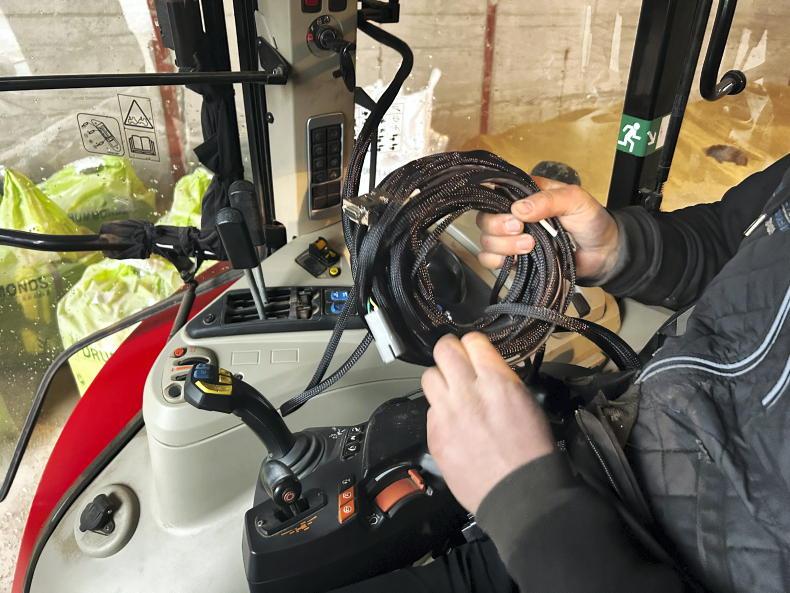
Neatly routing the wiring loom is the most time-consuming part of the install.
The second option is quick install, whereby the loom is run as neatly as possible inside the cab and powered via a three-pin plug.
According to Gavin, this tends to be more common where the guidance system will be swapped between several tractors on the farm. However, if it is only going to be swapped between two tractors, then he recommends opting for a second wiring loom and hard wiring one into each tractor.

Part of the hard wiring process involves routing the wiring loom behind panels and under the floor.
Then it is only a matter of swapping the display and the receiver between the two tractors.
A second loom will cost in the region of €400 plus VAT.
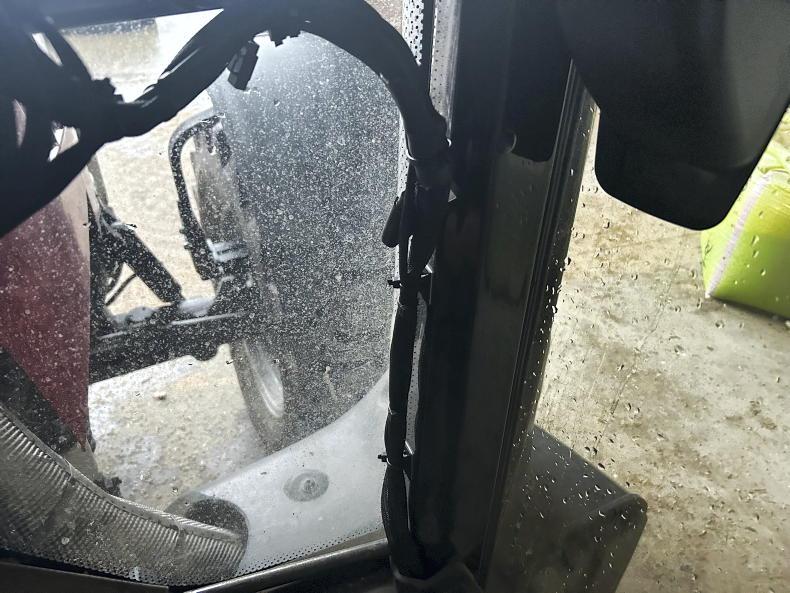
Where exposed. cable management is key for a neat install.
Mounting the receiver is straightforward too, especially to a Massey Ferguson roof or any roof that is magnetic.
For tractors equipped with a plastic roof and no magnet element, a steel plate will need to be stuck to roof, on which the receiver can be seated.
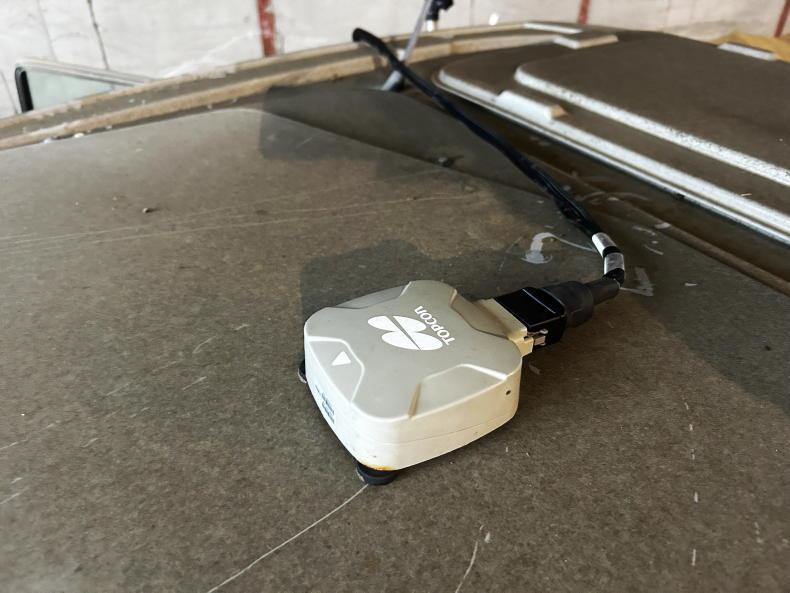
A metal plate may need to be stuck to the roof in order to securely seat the receiver via its magnetic feet.
Remember, mount the receiver as close to the centre line as possible for a more accurate positioning when setting up implement widths. Simply connect the receiver to the wiring loom using the specific
Once fully installed, the next step is to power on the display for the first time.
Once up and running, the vehicle geometry needs to be inputted in the settings menu under the vehicle section.
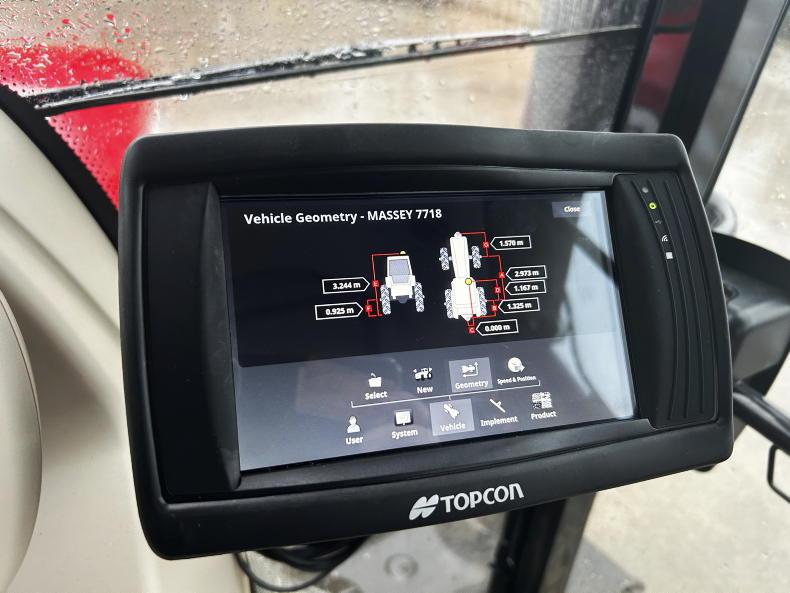
Once the unit was physically installed, tractor and implement geometry needs to be inputted.
Topcon has a library with pre-set geometry measurements for hundreds of tractor models, so have a look for your particular tractor model.
The Massey Ferguson 7718S was in the library which made the setup procedure easier. However, slight tweaks had to be made regarding the receiver’s position, but wheelbase and everything else was untouched. Exact geometry is more important for machines running auto steer or even automatic section control, etc.
On the XD terminal, a library of implements and tractors can be created and saved. This leaves for quick setup when changing between tasks.
Task management data such as field information, auto field selection, application data, etc, can all be stored.
Model: XD.Display size: 7in.Receiver: AGM-1.Pass-to-pass accuracy: 0-12cm.Autosteer: yes, via unlock.Headland turns: yes, via unlock.Auto section control: up to 30 sections via unlock.Rate control: yes, via unlock.Isobus implement control: yes, via unlock.Task management: yes. Kit list price: €2,800 plus VAT.
While GPS guidance technology has been on the go for a long number of years in agriculture, it is really in the last 10 years that it has filtered down on to Irish tillage farms and even more recently on to livestock farms.
Factors driving the use of such systems not only include more complex machines, capable of wider working widths, but also high input prices such as fertiliser and sprays and their more regulated usage. Therefore, precise application and placement is key in a modern farming enterprise. In addition, there is an element of labour saving too.
Where labour and experienced operators are limited, guidance undoubtedly makes task of fertiliser spreading etc easier. Modern, free-to-air guidance systems in their simplest form are much more refined and versatile in their ability now too.
In many cases, the implantation of even the most basic guidance system can lead to savings at farm level. Take, for example, urea currently priced at €500/t, back from the record 2022 highs of €980/t. If a farmer spreads 50t annually and can save 1% (500kg) for conservative calculations, he or she can save €250 in monetary terms. Not only is this a financial saving but it is a nitrates saving too if it results in less product being spread.
Establish your needs and budget
Before making any decisions on brand or model, Gavin outlined the importance of assessing the exact needs and requirements from a guidance system along with a budget, as this will automatically narrow the options.
It is also important to compare like for like in terms of spec.
Do you require a system purely to point you in a straight line and show a basic coverage map for broadcast fertiliser applications in grassland? Or do you require further levels of accuracy and a system that offers the potential of going down the route of section control and/or the capability of being used as an Isobus-control terminal in the future? These are two very different scenarios with different solutions.
There is a vast number of companies offering tablet-based systems to do the former, while the premium brands tend to offer solutions that do the former and are ready for the latter through the use of unlocks.
Essentially, these brands take a modular approach whereby such functionality is integrated into the solution but in order to be somewhat price competitive they lock their use.
Then when the use of such functions are required they are made available with unlocks through the dealer.
This doesn’t mean that the premium brands of Topcon and Trimble and others offer only one physical solution. They do in fact offer an extensive range with the same basic functionality.
Certain smaller tablet-based systems do not have access to the same range of satellites as some of the more premium brands
However, the main differences aside from certain unlocks as standard is screen size, processing power and memory.
Oftentimes, certain smaller tablet-based systems do not have access to the same range of satellites as some of the more premium brands and therefore signal/ accuracy can be an issue in parts of the country.
Larger global brands like Trimble and Topcon tend to be aligned with more satellites.
Gavin outlined that Topcon free to air systems can access as many as 36 satellites at any one time.
Although free-to-air signals can provide accuracy down to as little as 0cm to 12cm which will satisfy almost all non autosteer users, customers can upgrade to a subscription-based correction service at a later stage, if accuracy down to as much as 1cm is required.
The basic tablet-based systems can be bought from €1,000 plus VAT depending on features and functions.
However, the more premium options tend to start around €2,500 plus VAT. For this, you are essentially paying for the increased capability, increased functionality and upgradability.
Once purchased, consider having your system insured.
Wel-Tech Agri and Plant
We met Gavin Weldon from Wel-Tech Agri and Plant, specialists for Topcon Positioning Systems, to see what’s involved in installing a Topcon XD basic manual guidance system to a non-guidance ready tractor.
Based in Ardee, Co Louth, Wel-Tech also specialises in the supply and service of RDS weighing systems and Landquip sprayers.
Topcon is a well-established name in the guidance market and offers what can be described as some of the more premium solutions currently on the market.
Catering for the customer with more basic needs, Topcon since 2020 has offered its 7in XD terminal and its AGM-1 receiver.
Moving up through the range it offers the XD Plus (12.1in), X25(8.3in) and X35 (12.1in) systems.
Everything you need to get started is in the box. The XD kit includes the 7in touchscreen display terminal, AGM-1 rooftop receiver, mounting bracket and a wiring loom with all the necessary connectors plus a power switch.
The AGM-1 is the entry level receiver and is capable of 30cm pass to pass accuracy using Topcon’s Topnet Live correction service. 
The bracket mounting process.
The tractor in which the XD unit was installed was a Massey Ferguson 7718S.
The customer required the display to be positioned alongside the steering column so that it would be within his line of sight when looking forward.

The XD terminal is mounted to the bracket.
A simple mounting bracket was fabricated out of flat, mild steel and mounted to the lower cross member at the front of the cab.
The base of the terminal’s adjustable mount was bolted to the steel bracket.
The terminal was then mounted and its position set and secured. 
The ram mount is fixed to the steel bracket.
Wiring up the XD system is practically a matter of plug and play. However, Gavin outlined that being a CAN bus wiring loom, cutting and re-terminating plus isn’t an option.
According to Gavin, installs are usually done one of two ways. The first is a full hardwire install, whereby all cables are neatly routed out of sight from the rooftop receiver to the display and powered directly from the tractor battery using the fused supply lead.
The loom’s power switch is neatly routed and mounted wherever there is a free blanking plate on the dash or pillar.
This type of install leaves the system looking as if it were factory-fitted.
Gavin did note that Massey Fergusons tend to be one of the easier tractors to hardwire. 
Neatly routing the wiring loom is the most time-consuming part of the install.
The second option is quick install, whereby the loom is run as neatly as possible inside the cab and powered via a three-pin plug.
According to Gavin, this tends to be more common where the guidance system will be swapped between several tractors on the farm. However, if it is only going to be swapped between two tractors, then he recommends opting for a second wiring loom and hard wiring one into each tractor.

Part of the hard wiring process involves routing the wiring loom behind panels and under the floor.
Then it is only a matter of swapping the display and the receiver between the two tractors.
A second loom will cost in the region of €400 plus VAT.

Where exposed. cable management is key for a neat install.
Mounting the receiver is straightforward too, especially to a Massey Ferguson roof or any roof that is magnetic.
For tractors equipped with a plastic roof and no magnet element, a steel plate will need to be stuck to roof, on which the receiver can be seated.

A metal plate may need to be stuck to the roof in order to securely seat the receiver via its magnetic feet.
Remember, mount the receiver as close to the centre line as possible for a more accurate positioning when setting up implement widths. Simply connect the receiver to the wiring loom using the specific
Once fully installed, the next step is to power on the display for the first time.
Once up and running, the vehicle geometry needs to be inputted in the settings menu under the vehicle section.

Once the unit was physically installed, tractor and implement geometry needs to be inputted.
Topcon has a library with pre-set geometry measurements for hundreds of tractor models, so have a look for your particular tractor model.
The Massey Ferguson 7718S was in the library which made the setup procedure easier. However, slight tweaks had to be made regarding the receiver’s position, but wheelbase and everything else was untouched. Exact geometry is more important for machines running auto steer or even automatic section control, etc.
On the XD terminal, a library of implements and tractors can be created and saved. This leaves for quick setup when changing between tasks.
Task management data such as field information, auto field selection, application data, etc, can all be stored.
Model: XD.Display size: 7in.Receiver: AGM-1.Pass-to-pass accuracy: 0-12cm.Autosteer: yes, via unlock.Headland turns: yes, via unlock.Auto section control: up to 30 sections via unlock.Rate control: yes, via unlock.Isobus implement control: yes, via unlock.Task management: yes. Kit list price: €2,800 plus VAT. 












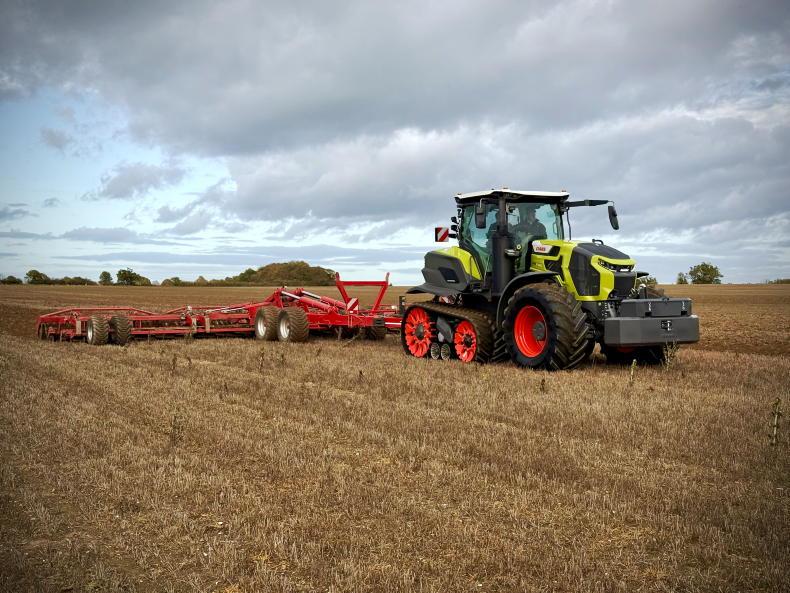
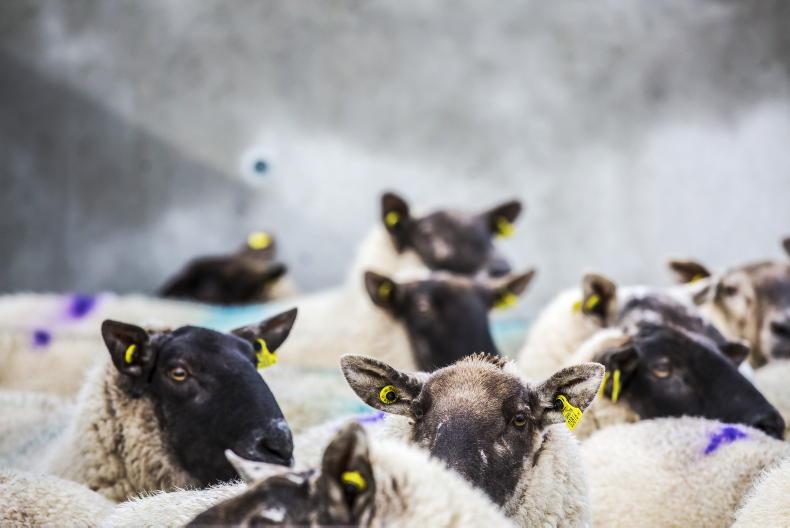

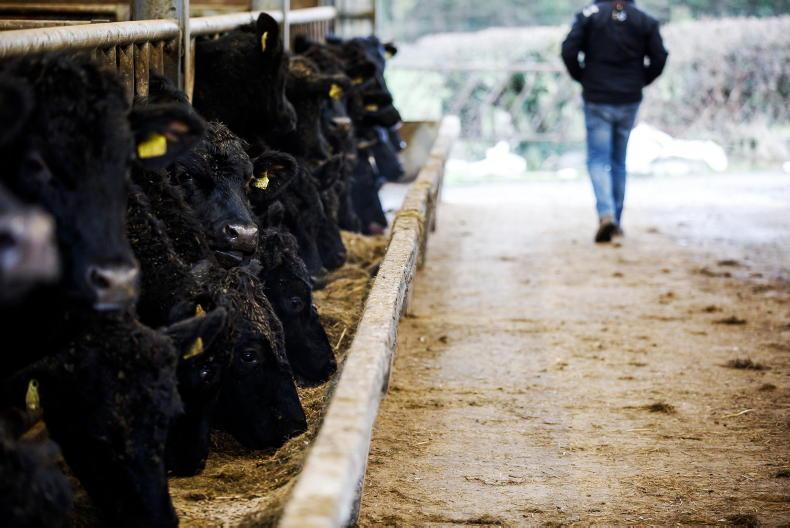
SHARING OPTIONS